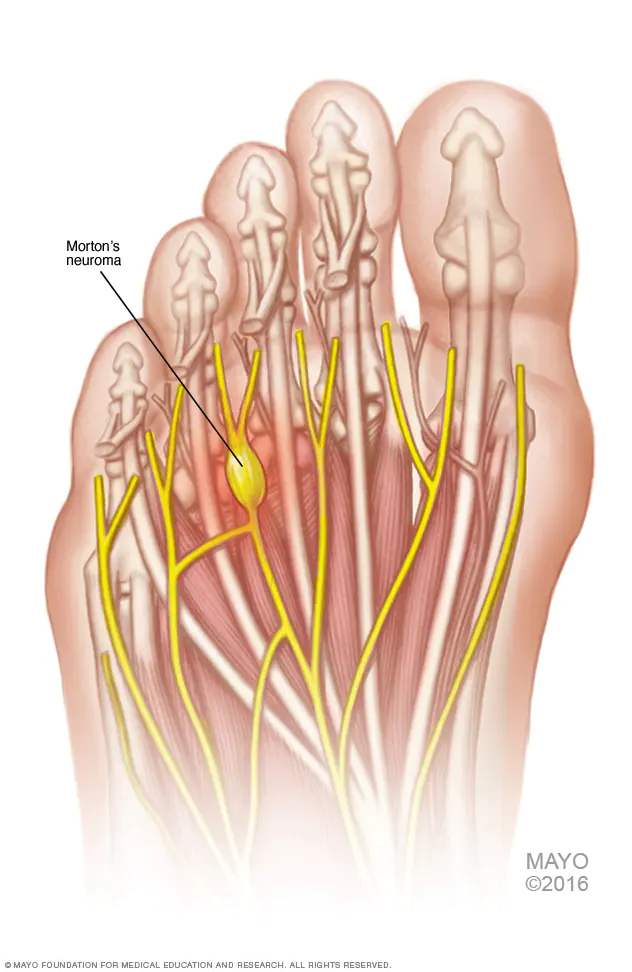What is Morton’s Neuroma?
What is Morton’s Neuroma? If you are feeling pain in the ball of the foot (metatarsals), you may have developed Morton’s Neuroma.
Morton’s Neuroma (or neuritis) is a condition where the nerve that runs between the long bones in the ball of the foot has become inflamed. A person who has developed this condition may experience shooting pain, tingling, numbness or swelling – which can be extremely uncomfortable and affect your daily life.
Image below of Morton’s Neuroma from Mayo Clinic, shows thickening of the tissue around one of your nerves leading to your toe.
Morton’s Neuroma Symptoms
There are several symptoms that can indicate a person may be suffering from this condition.
The main symptom is typically pain in the ball of your foot. This may feel like a burning or stabbing sensation, and it can even feel like you are standing on a small rock or pebble. Other symptoms of this condition include:
- Numb sensation in toes and top of feet
- Difficulty walking due to the pain
- Tingling feeling
Causes of Morton’s Neuroma
Understanding the underlying causes of Morton’s Neuroma can help in preventing the condition. This condition is often linked to repetitive stress or pressure on the foot, particularly in those who wear tight or high-heeled shoes, or participate in high-impact activities like running. Other factors such as foot deformities (like bunions or flat feet) and certain foot mechanics can also contribute to the development of Morton’s Neuroma.
Who is at Risk?
Certain groups of people are more likely to develop Morton’s Neuroma. These include athletes, particularly runners and dancers, individuals who frequently wear tight or narrow footwear, and those with pre-existing foot conditions such as bunions or flat feet. Understanding whether you are at risk can help in taking preventative measures early.
How is Morton’s Neuroma Diagnosed?
Diagnosis typically involves a thorough physical examination by a podiatrist, where they will assess the foot for tenderness and swelling. They may also perform imaging tests, such as an X-ray, ultrasound, or MRI, to confirm the diagnosis and rule out other potential causes of the pain.
The Impact of Morton’s Neuroma on Daily Life
Living with Morton’s Neuroma can significantly affect your quality of life. The constant pain and discomfort can make simple activities like walking or standing for long periods challenging. This section can highlight how important it is to seek treatment early to prevent the condition from worsening and to maintain an active lifestyle.
Treatment Options for Morton’s Neuroma

